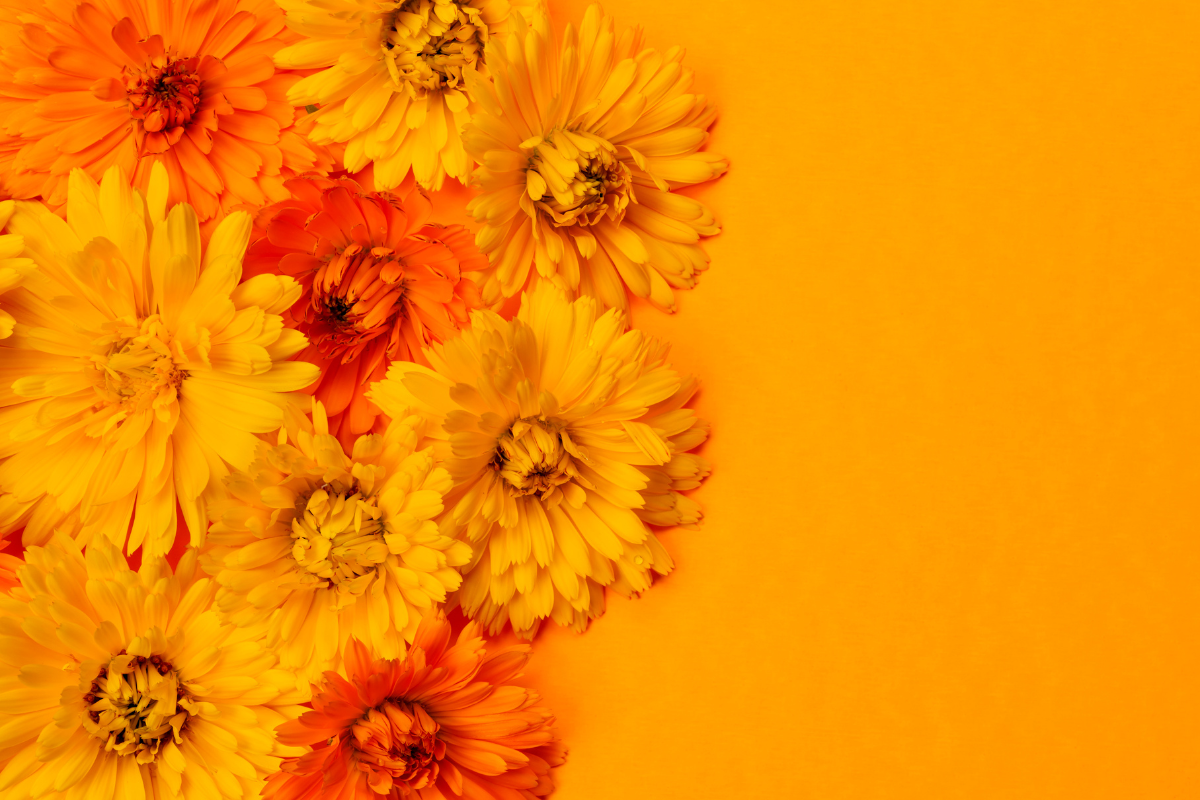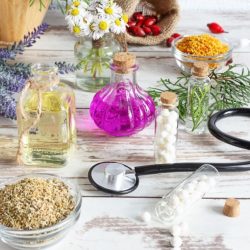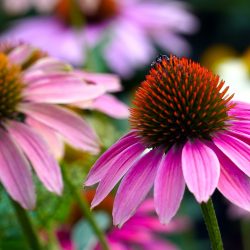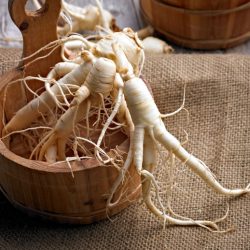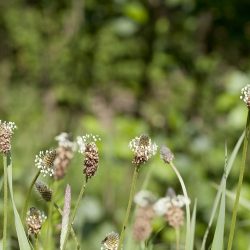In ancient Greece, Theophrastus and Dioscorides spoke of a plant called Klymenos . At the same time, among the Romans ( Virgil , Pliny , Columella …), the case of Caltha is mentioned. Some writers who are not very informed have wanted to see in these two names the concern . If the first of these terms is forgotten, confusion over the second term persisted for so long that in the 16th century Jean Bauhin designated garden marigold with the Latin name Caltha vulgaris , while another caltha, Caltha palustris is nicknamedconcern for marshes, concern for water …
A little history
From the end of the 8th century, we indeed find marigolds named solsequia in the Capitular of Villis , a word very close to solsequium . But this chapter gives the latter another name: Intubas . As such, it is clearly distinguished from the Carolingian marigold, although the communities of the two names have caused much confusion, since marigold, chicory and even dandelion responded to the title of “meteorological” plants to which solsequia and solsequium refer following the trace of the sun in the sky, opening when it appears in the middle of the morning and closing when it disappears as tea time approaches.
A bit of mythology
Greek mythology then tries to explain this phenomenon in its own way: four wood nymphs fell madly in love with the god Apollo and became jealous of each other. This distracted them so much that they ended up ignoring their obligations to Artemis , who turned them into four dull white marigolds that Apollo grieved to see. He could not help but color the flowers with the help of the sun’s rays. It is from this day that the marigolds carry golden yellow or orange flower heads whose heads follow the course of the sun to evoke the memories of love of these nymphs who had eyes only for the luminous Phoebus .
back to history
The form of solsequia then becomes soulcil , as Rabelais wrote in the 16th century, then soulcie , and finally concern ; the word appearing around 1540. The scientific name for marigold, calendula , is older (it comes from the time of the school of Salerno), and would come from the Latin calandæ , which designates calends; the first day of each month, since it is true that in a mild climate, and in the absence of frost, the marigold is able to flower all year round, in other words every month. Therefore, it is not only a meteorological plant, but also a calendar plant (where the word calendar comes from).
Marigold was a very popular plant in the Middle Ages and was considered a panacea. Hildegard did not name it in Latin, since she ultimately called it Ringula , a form close to today’s German Ringelblume . Abesse uses its powerful properties to heal skin ulcers and itching caused by scalp scabies and impetigo. Hildegard also prescribed it in case of intestinal disease and, like Albert the Great , considered it an antidote against poisons, the bites of poisonous animals and other intoxications.
What are the main pharmacological properties of Marigold flowering tops?
Anti-inflammatory properties:
The potent anti-inflammatory response of C. Officinalis extract may be mediated by inhibition of pro-inflammatory cytokines (IL-1β, IL-6, TNF-α, YFN-y C-reactive protein), cyclooxygenase 2 (COX-2), and the subsequent synthesis of prostaglandins. This activity, observed with local topicals, is essentially due to the triterpenoids of the plant, and more particularly to the mono-ester of faradiol, which exerts an anti-oedematous action equivalent to that of indomethacin.
Healing and mucocutaneous anti-inflammatory properties:
Creams based on marigold and rosemary alone or in combination can prevent dermatitis caused by sodium lauryl sulfate , a component found in various soaps and shampoos.
A 2009 review of the literature revealed preliminary data in favor of the local efficacy of calendula in the prophylaxis of acute dermatitis during radiotherapy. Thus in this indication, during a randomized phase III trial carried out with 254 patients treated for breast cancer, a calendula ointment proved to be very effective in preventing acute dermatitis of degree 2 or more, more than a trolamine emulsion .
In 2018, in a randomized controlled clinical trial in 72 primiparous women, calendula ointment was shown to significantly increase the speed of healing and healing of a caesarean section wound.
Antioxidant properties:
Marigold reduces oxidative stress and bone loss, and preserves collagen fibers. A similar study shows that the oral intake of its extract reduces inflammatory bone resorption, in relation to its anti-inflammatory properties and to its effects on bone metabolism, without affecting renal or hepatic functions. This work indicates that Calendula Officinalis may constitute a potential adjuvant therapy in the treatment of periodontitis.
Anticancer properties:
A systematic review of studies describing the cytotoxic role of C. Officinalis and its therapeutic role on cancer cells was carried out in 2018 using the PubMed database. It highlights that the extracts of C. Officinalis have a cytotoxic activity against different lines of cancerous cells, variable from one study to another, depending on the organ of the plant subjected to the extraction, extraction method and cancer cell lines used for each study. However, the cytotoxic activity of calendula is linked to several of its bioactive compounds, which exert multiple roles in activating apoptotic proteins and in decreasing the expression of proteins that inhibit cell death.
Immune and anti-infective properties:
The ethanolic extract of calendula stimulates the mixed proliferation of human lymphocytes in vitro. In a randomized controlled trial in 18 patients, topical application of calendula ointment prevented secondary infection and reduced wound diameter and depth by 30-40% within 4 weeks.
Experimental studies have demonstrated in vitro that the extracts of calendula flowering tops have a high degree of activity against 18 strains of anaerobic and facultative aerobic periodontal bacteria, as well as against 4 different types of fungi, with an inhibitory effect comparable to that exerted by reference antifungals, amphotericin B and nystatin . Marigold has antileishmanial and HIV activity in vitro .
Other properties:
The pharmacological evaluation of C. Officinalis on the bronchial asthma of various subjects highlights an antiasthmatic, antihistamine, anticholinergic, antispasmodic activity, and a stabilizing effect on mast cells.
Are there any precautions for use with Marigold?
Toxicity:
- Taken internally, marigold (calendula) is toxic in high doses. Do not exceed the prescribed dosage. In mother tincture, the maximum dose is 30 drops to dilute, 3 times a day.
- Comply with the manufacturer’s recommendations or the methods of use mentioned on the medical prescription.
Contraindications:
- According to the EMA, the use of marigold (calendula) is not recommended for pregnant or breastfeeding women, as well as for children under 6 years of age, in the absence of safety data.
- The European agency recommends reserving the use of calendula for children over 6 years old for cutaneous use, and 12 years old for mouthwashes and gargles.
- Asteraceae allergy.
- Hypersensitivity to active substances.
Precautions for use:
- Do not extend the use of marigold internally (infusion, mother tincture) for more than 2 weeks. Beyond this period, medical advice or a health professional specialized in herbal medicine is recommended.
- Genotoxicity suspected, but not mutagenic.
How to take Marigold and at what dosage?
Liquid form:
- Mother tincture : 20 to 30 drops 1 to 3 times a day in a glass of water. Do not exceed this dosage.
- Hydroalcoholic extract : 20 to 30 drops 1 to 3 times a day in a glass of water. Do not exceed this dosage.
- Infusion : Infuse 1 to 2 tbsp. coffee of dried flowers in 150 to 200 ml, 1 cup 2 to 3 times a day, for bucco-pharyngeal affections or gastric indications.
External use :
- Many calendula-based preparations for dermatological purposes are commercially available, in the form of creams , ointments , care milk , vegetable oil and even soaps .
Medical bibliographic sources and clinical trials :
- Preethi KC, Kuttan G, Kuttan R. Anti-inflammatory activity of flower extract of Calendula officinalis Linn. and its possible mechanism of action. Indian J Exp Biol. 2009
- Della Loggia R, Tubaro A, Sosa S, Becker H, Saar S, Isaac O. The role of triterpenoids in the topical anti-inflammatory activity of Calendula officinalis flowers. Planta Med. 1994
- Leach M.J., Calendula officinalis and Wound Healing : A systematic Reviewof car., Wounds, 2008
- Zitterl-Eglseer K, Sosa S, Jurenitsch J, Schubert-Zsilavecz M, Della Loggia R, Tubaro A, Bertoldi M, Franz C. Anti-oedematous activities of the main triterpendiol esters of marigold (Calendula officinalis L.). J Ethnopharmacol. 1997
- Cruceriu D. et al., Calendula officinalis : Potential Roles in Cancer Treatment and Palliative Car, Integr Cancer Ther., 2018
- Nikmehr B. et al., In vitro antileishmanial activity of methanolic extracts of Calendula officinalis floxers, Datura stramonium seeds, and Salvia officinalis leaves; Chin J Nat Med., 2014
- Sagar R, Sahoo HB, Kar B, Mishra NK, Mohapatra R, Sarangi SP. Pharmacological evaluation of calendula officinalis L. on bronchial asthma in various experimental animals. Int J Nutr Pharmacol Neurol Dis [serial online] 2014
- Z Kalvatchev, R Walder, D Garzaro. Anti-HIV activity of extracts from Calendula officinalis flowers. Biomedecine & Pharmacotherapy, 1997
- Kassab S, Cummings M, Berkovitz S, van Haselen R, Fisher P. Homeopathic medicines for adverse effects of cancer treatments. Cochrane Database Syst Rev. 2009
- P. Pommier, F. Gomez, M.P. Sunyach, A. D’Hombres, C. Car rie, X. Montbarbon. Phase III Randomized Trial of Calendula Officinalis Compared With Trolamine for the Prevention of Acute Dermatitis During Irradiation for Breast Cancer. Journal of Clinical Oncology, 2004

